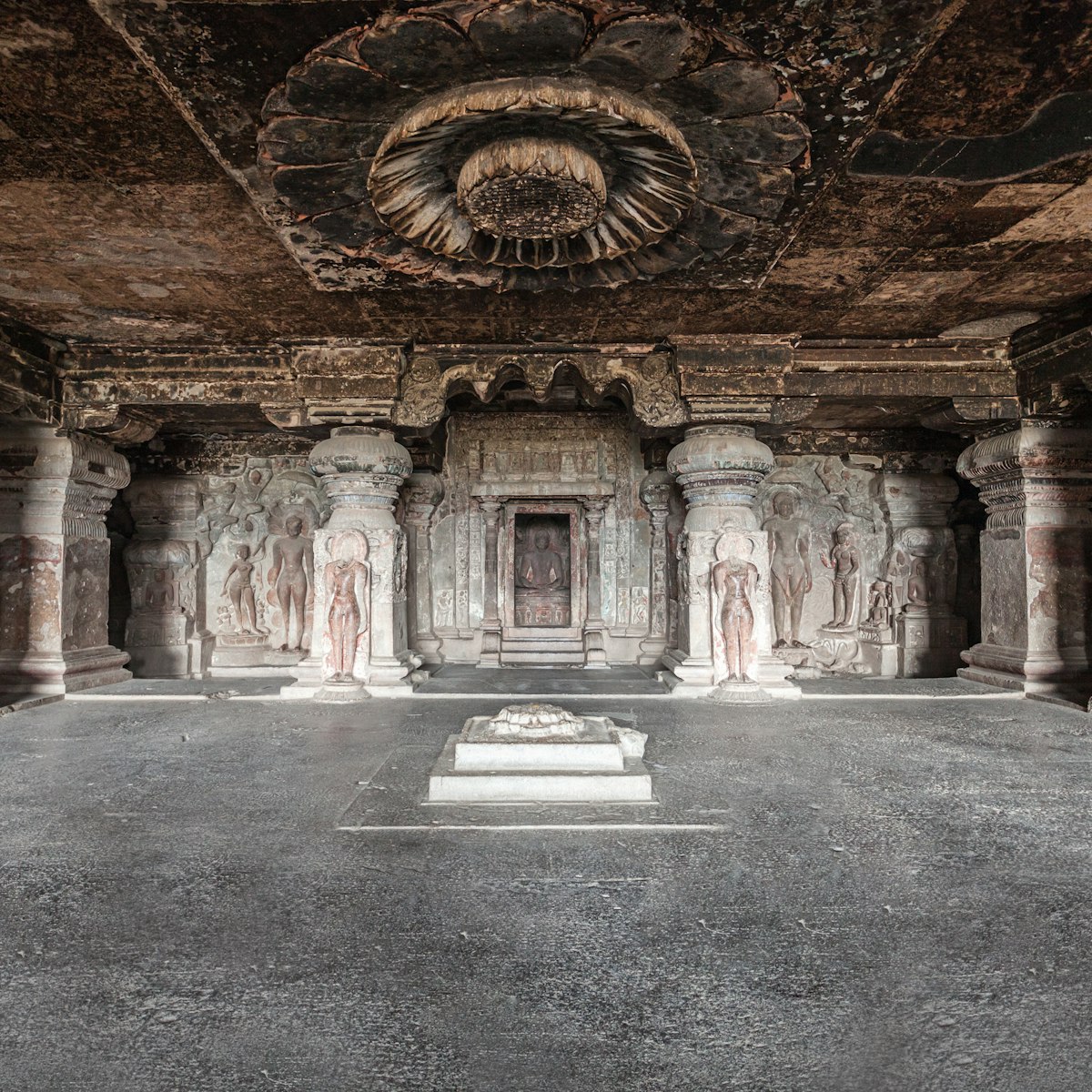Cave 16, a vihara, contains some of Ajanta’s finest paintings and is thought to have been the original entrance to the entire complex. The best known of these paintings is of the ‘dying princess’, Sundari, wife of the Buddha’s half-brother Nanda, who is said to have fainted at the news her husband was renouncing the material life (and her) in order to become a monk.
Carved figures appear to support the ceiling and there’s a statue of the Buddha seated on a lion throne teaching the Noble Eightfold Path.

